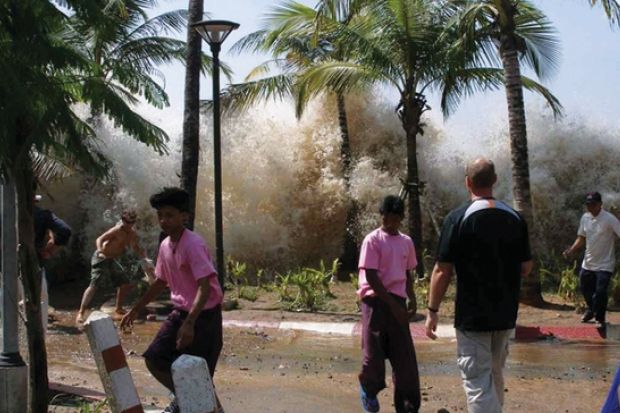According to a prominent academic in the field, the revolution in user-generated media content happened around the end of 2004.
The Indian Ocean tsunami on 26 December that year, followed by the 7 July bombings in London and Hurricane Katrina in the summer of 2005, spurred a huge rise in people using the internet and social media to document major events, according to Farida Vis, research fellow in the social sciences at the University of Sheffield.
"It coincides with technological changes such as [the spread of] camera phones, so you get material coming out of tsunami-hit areas or videos from the Tube in the aftermath of the London bombing," she said.
These developments have significant implications for anyone researching communications or the shifting nature of public opinion.
Dr Vis, who has established herself as an expert on these developments, has joined forces with Mike Thelwall, professor of information science at the University of Wolverhampton, to produce a textbook called Researching Social Media. It is expected to be published by Sage in November 2013.
Her career gives a good indication of both the opportunities and the challenges of working in this field.
When she started out as a researcher, Dr Vis wrote a PhD thesis analysing coverage by traditional media, namely newspapers, of violent events in the Middle East.
She has since gone on to look at responses to Hurricane Katrina on Flickr, reaction to the Dutch anti-Islamic film Fitna (2008) on YouTube and coverage of the 2011 London riots on Twitter.
The growing number of sources used in her analysis tell their own story. For the first of these three studies Dr Vis used 235 posts by 106 individuals, which she was able to collect herself. For the Fitna project, she examined 1,413 videos by 700 individuals - and, for the first time, "had to have software commissioned to do the project".
By the time Dr Vis turned her attention to last year's riots, the size of the available dataset had increased exponentially to a corpus of 2.6 million tweets by around 700,000 individuals, which naturally required a far larger team of researchers, coders and technological support.
"You can only read a sample of 2.6 million tweets," she said, "although a lot of the content is retweets, so you need an algorithm comparing each individual tweet to all the others in the corpus, which allows you to say if it's identical or near-identical."
A moving digital picture
Dr Vis added that the "tricky thing" about Twitter research is that use of the platform - and the software it engages with - is constantly changing.
"As Twitter researchers we have to be very flexible and not rest on our laurels. One of the ways I keep on top of this is by being active on Twitter myself," she said.
Despite the technical challenges, her work on the riots served to illustrate the way that Twitter research can make quick and incisive contributions to matters of public debate.
She was co-opted on to the Reading the Riots project, a joint initiative between the London School of Economics and The Guardian newspaper, investigating the causes of the urban unrest in August 2011.
"The Guardian had a corpus donated by Twitter and then realised they needed academics to do the in-depth analysis," she explained.
"We looked at whether Twitter [had been] used as a platform for incitement and found it hadn't. There was no empirical evidence. Claims had been made and pushed by politicians but our project challenged and discredited them."
More recently, when Hurricane Sandy hit the US at the end of October, Dr Vis and her colleagues acted quickly to analyse a trend for fake images being shared across social media.
They produced an article within a week of the hurricane's arrival that shed light on how many images were fraudulent.
But although she is an enthusiast for the kind of research that the huge datasets created by social media now make possible, Dr Vis is also concerned that a stress on quantitative methods and "big data" can lead to a neglect of other, complementary techniques.
"There is a level of interpretation that can only be reached by methods that often aren't part of the big data family," she noted.
"If you want to understand why people rioted, you have to ask the rioters. Looking at texts on its own is not going to tell you about motivation. We have to be very careful about how much we read into textual analysis."
